Traveling with liquid medications doesn’t have to be a nightmare. Millions of people fly every year with insulin, chemotherapy drugs, EpiPens, or prescription creams-and most of them breeze through security without a hitch. But if you’ve ever been held up because a TSA officer didn’t know the rules, you know how stressful it can be. The good news? Liquid medications are legally exempt from the 3.4-ounce limit that applies to shampoo, toothpaste, and lotion. The trick is knowing exactly what to do-and what not to do.
Know What’s Covered
Not every liquid counts as a medical exemption. The TSA allows unlimited amounts of prescription medications that are necessary for your health. This includes:- Insulin and other injectable drugs (in vials, pens, or syringes)
- Oral liquid prescriptions (like liquid antibiotics or seizure meds)
- Prescription creams and ointments (for eczema, psoriasis, etc.)
- EpiPens and auto-injectors
- IV bags and saline solutions (if prescribed)
Things that don’t qualify: over-the-counter cough syrup, liquid vitamins, or supplements unless they’re prescribed and labeled as such. If it’s not on your prescription, TSA can ask you to explain it-and if you can’t, they may confiscate it.
Keep It in Original Containers
This is the single most important rule. Over 60% of delays at security checkpoints in 2024 happened because medications weren’t in their original bottles. TSA officers aren’t pharmacists. They need to see the label: your name, the drug name, the doctor’s name, and the pharmacy info. If you’ve transferred your insulin into a travel case or your pills into a pill organizer, you’re making things harder-for yourself and the officer.Even if you’ve been flying for years with unlabeled containers, don’t risk it. A 2025 TSA internal survey found that 98% of officers prefer to see original packaging. It speeds things up. It reduces confusion. It keeps your meds safe.
Declare Everything Before Screening
Don’t wait for them to ask. As soon as you walk up to the security checkpoint, tell the officer: “I have liquid medications.” Say it clearly. Don’t whisper. Don’t wait until they wave you through. If you’re carrying more than one type-say, insulin, a liquid pain med, and a prescription cream-list them out. “I have insulin vials, oral liquid medication, and a topical cream.”Doing this cuts your screening time by nearly half. Research from Johns Hopkins shows travelers who declare upfront get through in under 2 minutes. Those who don’t? They average 4.7 minutes-and sometimes longer if the officer has to call a supervisor.
Use a Separate Clear Bag
Your 3-1-1 liquids bag? Leave it alone. Your medications go in a different clear plastic bag. Put all your liquid meds in one bag-insulin vials, creams, oral meds-and keep it in an outer pocket of your carry-on. Don’t bury it under clothes or electronics. TSA officers need to see it fast.Why? Because they screen meds separately. If your meds are mixed in with your shampoo, they’ll have to pull everything out, re-screen it, and that’s where delays happen. A 2025 TSA operational report showed that travelers who kept meds in a separate bag reduced screening time from 4.7 minutes to just 1.8 minutes.
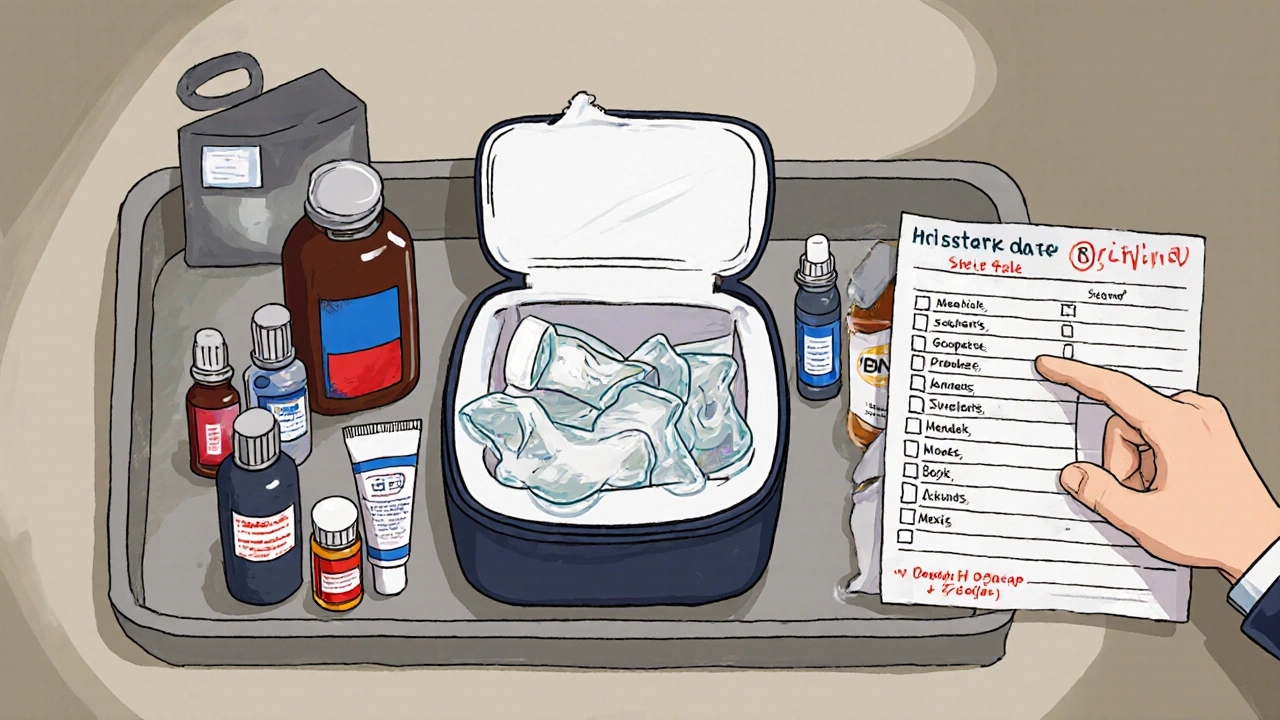
Ice Packs and Coolers Are Allowed-But With Rules
If you need to keep insulin or other meds cold, ice packs are fine. Frozen ice packs are allowed, but they must be partially melted by the time you get to the checkpoint. Completely solid ice packs are treated like regular ice and can be denied. If your pack is still hard, it might get flagged.Also, coolers can’t be bigger than 8x6x2 inches. That’s about the size of a small lunchbox. Don’t bring a cooler you use for groceries. TSA won’t let it through. If you’re carrying multiple vials, use a small insulated bag with one or two gel packs. Label it “Medication-Do Not Freeze” if you want to avoid confusion.
Bring Documentation-Just in Case
You don’t need a doctor’s note for most medications. But if you’re carrying controlled substances (like opioids or stimulants), or if you’ve had issues before, bring a printed list. Include:- Drug name and dosage
- Prescribing doctor’s name and phone number
- Pharmacy name and contact info
- Prescription number
Keep it in your phone or print a copy. The American Medical Association recommends this for all travelers with complex regimens. It’s not required-but it’s the difference between a 30-second check and a 20-minute wait.
What If They Don’t Know the Rules?
Sometimes, you’ll run into an officer who’s never seen a vial of insulin before. Or they think all liquids must be under 3.4 ounces. Stay calm. Don’t argue. Say: “According to TSA guidelines, prescription medications are exempt from the 3-1-1 rule. I can show you the policy on my phone if you’d like.”Most officers will check their tablet or call a supervisor. If they still refuse, ask to speak to a supervisor. You have rights. TSA’s own website confirms this exemption. You can also ask for a private screening if you’re uncomfortable with your meds being handled in public.
Special Cases: EpiPens, Glucagon, and Medical Devices
EpiPens and glucagon kits are treated like prescription meds. No size limit. No bag requirement. Just declare them. You don’t need to take them out of your pocket-just say, “I have an EpiPen.”For devices like insulin pumps or continuous glucose monitors (CGMs), you can keep them on your body. Don’t remove them. Just tell the officer: “I have a medical device attached.” They may do a pat-down, but they won’t make you take it off. If you’re nervous, wear loose clothing so they can easily see it.
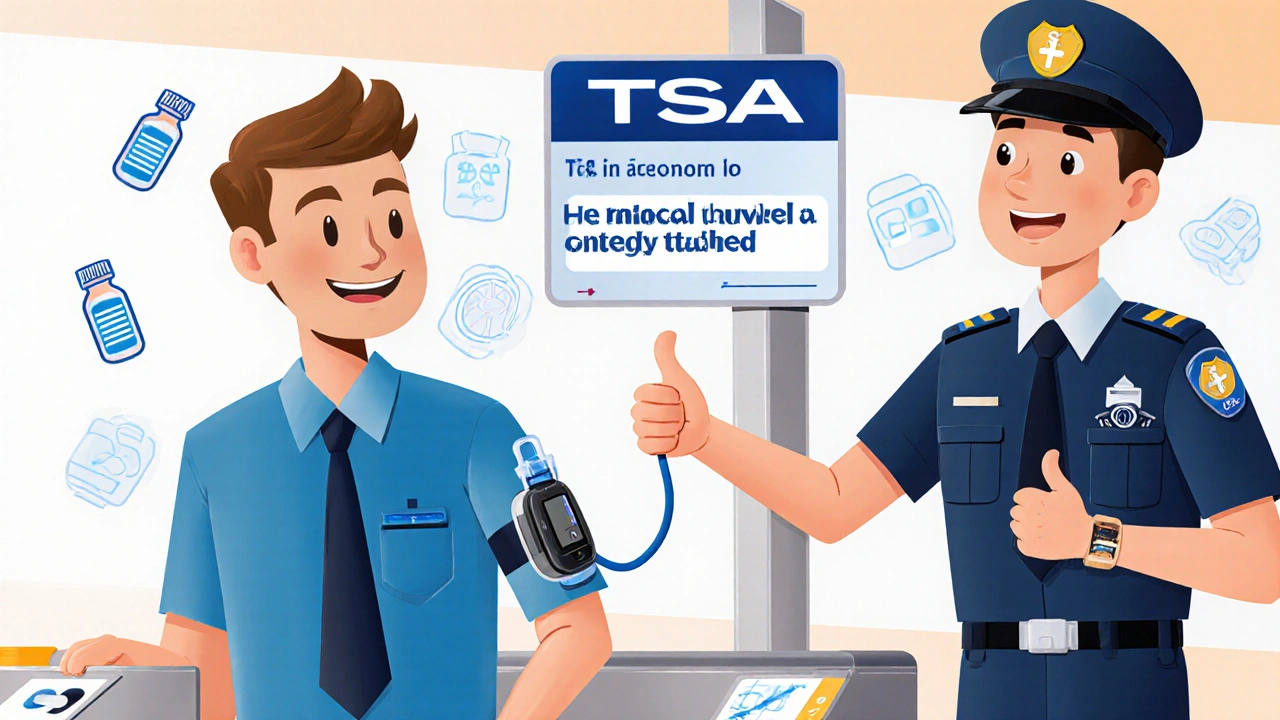
What About Medical Cannabis?
Even if it’s legal in your state, marijuana is still a federal controlled substance. TSA officers are required to report it. If you’re caught with THC oil or edibles, you’ll likely be referred to local law enforcement. Don’t risk it. Stick to FDA-approved medications. There are legal alternatives for nausea, pain, and anxiety that won’t get you detained.How to Prepare Before You Fly
Here’s a simple checklist:- Keep all meds in original labeled containers.
- Pack liquids in a separate clear bag.
- Bring a printed or digital list of your meds and prescriptions.
- Put the bag in an easy-to-reach spot (outer pocket).
- Declare your meds before you reach the X-ray machine.
- If you use ice packs, let them thaw slightly before leaving home.
- Don’t transfer pills or liquids into unlabeled containers.
First-time travelers spend about 2.7 hours preparing. That’s not a lot when you consider how much stress it saves you on the day of your flight.
The Future Is Getting Better
TSA is rolling out a new Medical Traveler Pre-Check program starting September 2025 at 12 major airports. It’s voluntary. You register online, get a code, and when you check in, your meds get flagged in the system. Screening time drops from 3.2 minutes to under 1.1 minutes.By 2026, AI systems will help screeners identify medications faster. Trials at Dallas/Fort Worth showed a 41% drop in errors. This isn’t science fiction-it’s happening. But until then, the rules are clear: declare, label, separate, and stay calm.
Final Tip: Don’t Fly Without a Backup
Always pack at least a 3-day supply of your meds in checked luggage-even if you’re only flying for a day. If your carry-on gets lost, you won’t be stranded. And if you’re on insulin, carry a backup pen or vials. You never know when a delay or a missed connection might happen.Can I bring more than 3.4 ounces of liquid medication on a plane?
Yes. Prescription liquid medications are exempt from the 3.4-ounce limit. You can bring as much as you need for your trip, as long as it’s clearly labeled and declared to TSA officers before screening.
Do I need a doctor’s note for my liquid meds?
No, a doctor’s note isn’t required for most medications. But if you’re carrying controlled substances (like opioids or stimulants), or if you’ve had issues before, bringing a printed list with your doctor’s name, pharmacy, and prescription number will help speed things up.
Can I pack my insulin in checked luggage?
You can, but you shouldn’t. Always keep insulin and other critical meds in your carry-on. Checked bags can get lost, delayed, or exposed to extreme temperatures. If your insulin freezes or overheats, it can become ineffective. Keep it with you.
Are ice packs allowed for refrigerated medications?
Yes, but they must be partially melted by the time you reach security. Completely solid ice packs may be denied. Use small insulated bags with one or two gel packs, and keep them under 8x6x2 inches in size.
What if a TSA officer refuses to let me bring my meds?
Stay calm and ask to speak to a supervisor. TSA’s official policy clearly states that prescription medications are exempt from liquid limits. You can also show them the TSA website on your phone. If they still refuse, you have the right to request a private screening or file a complaint with TSA afterward.
Can I bring liquid vitamins or supplements?
Only if they’re prescribed by a doctor and labeled as such. Over-the-counter vitamins, protein shakes, or supplements are subject to the 3.4-ounce limit and must go in your 3-1-1 bag. If you need more than that, get a prescription for them.

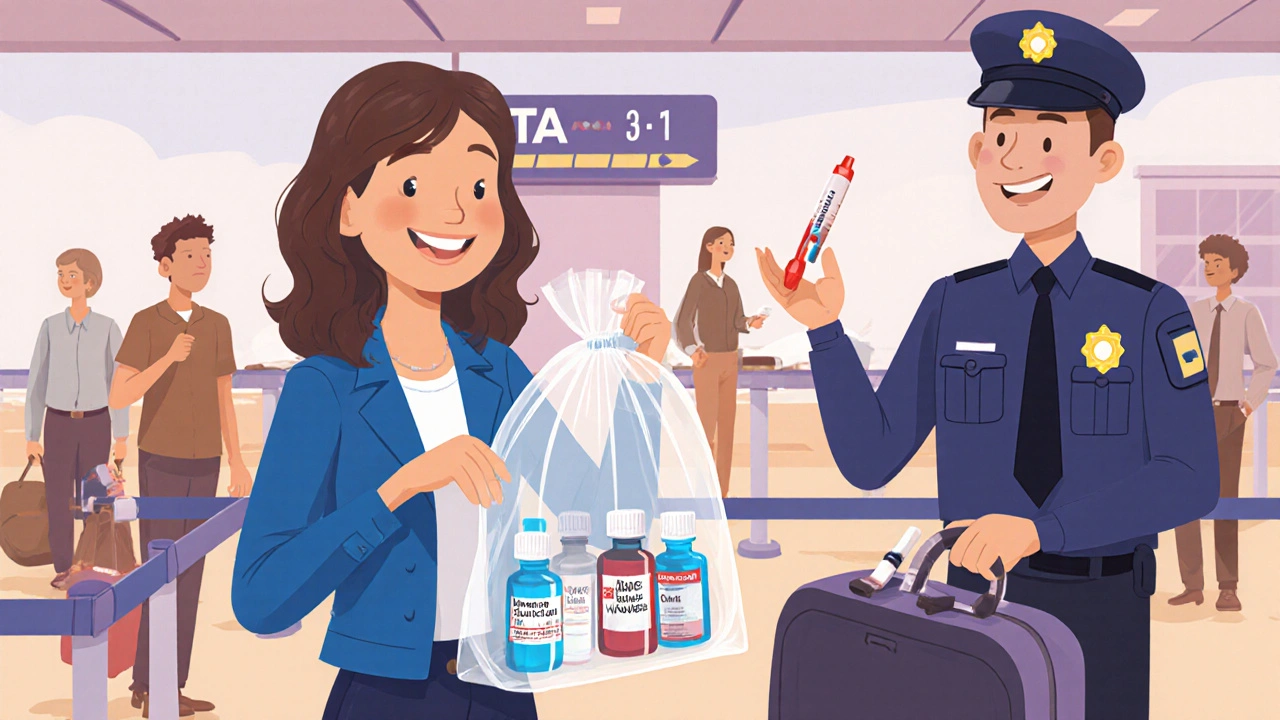
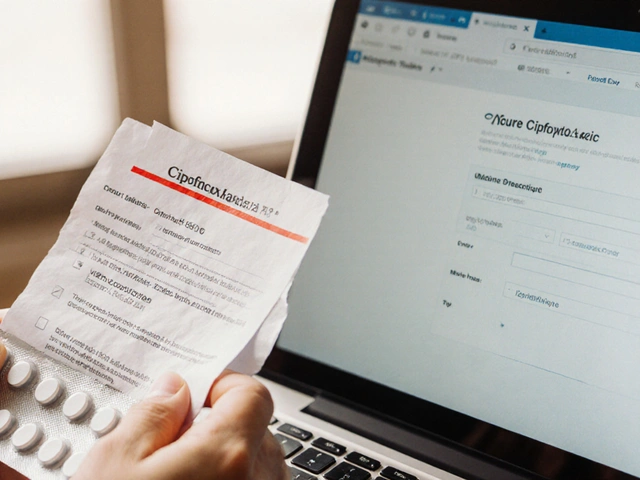
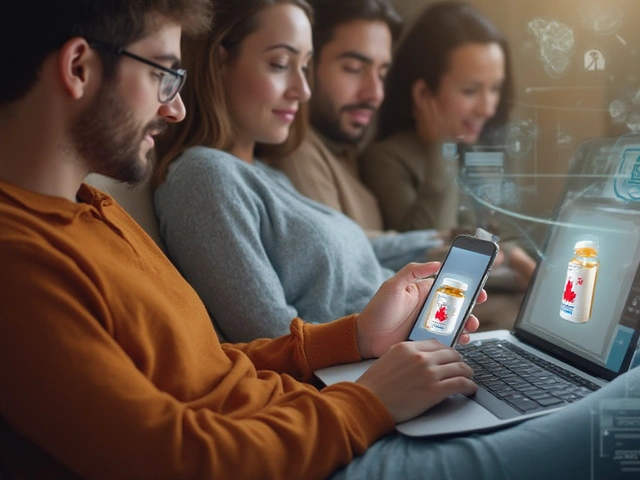
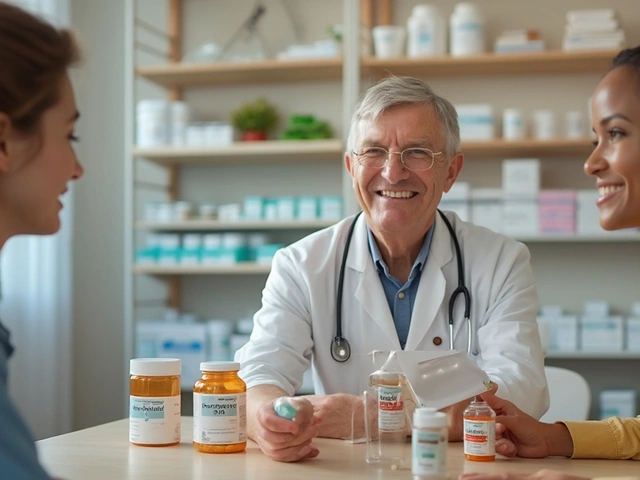
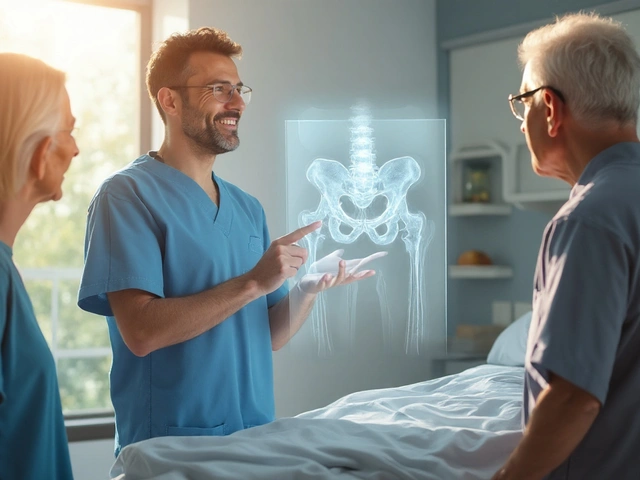
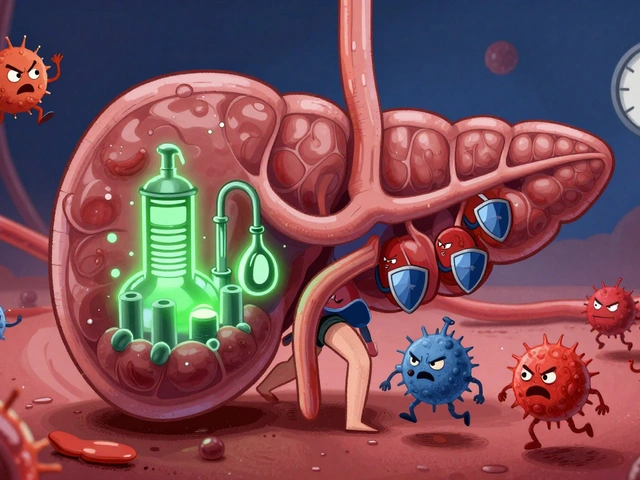
Andy Louis-Charles
November 25, 2025 AT 05:04 AMI always keep my insulin in a clear ziplock with the original vial labels. TSA agents usually just nod and move on. No drama. 😊
Douglas cardoza
November 25, 2025 AT 08:35 AMBro this is gold. I used to toss my meds in my toiletry bag and get pulled aside every time. Now I use a separate bag and say 'liquid meds' before I even get to the belt. Game changer. 🙌
Adam Hainsfurther
November 25, 2025 AT 16:23 PMInteresting how much of this comes down to presentation. The label isn't just for compliance-it's a social contract between traveler and officer. When you respect their process, they respect your needs. No shouting, no panic, just clarity. That's the real skill here.
Nikki C
November 27, 2025 AT 15:15 PMNever thought about letting ice packs thaw a bit before flying. That's the kind of quiet hack that saves your whole day
Jacob McConaghy
November 29, 2025 AT 01:33 AMPeople act like TSA is out to get you but 90% of the time it's just someone who’s never seen an EpiPen before. Calm + clear = faster. No need to be a hero. Just say what you have and hand it over. Works every time.
Vineeta Puri
November 30, 2025 AT 13:05 PMIt is imperative to adhere to the prescribed protocols for the transportation of medicinal substances through airport security. The integrity of the packaging and the clarity of declaration significantly enhance the efficiency and dignity of the screening process for all parties involved.
Victoria Stanley
December 1, 2025 AT 05:57 AMJust wanted to add-my mom has type 1 and she uses a little insulated pouch with a gel pack. She labels it 'Diabetic Medication - Do Not Freeze' and it’s never been an issue. Super simple, super smart.
Rachael Gallagher
December 1, 2025 AT 15:59 PMThey’re using this to track us. Next they’ll scan your meds and link it to your phone. Wake up people.
steven patiño palacio
December 3, 2025 AT 15:26 PMIt is worth noting that the TSA’s exemption for prescription medications applies only to items dispensed under a valid prescription. Over-the-counter liquids, even if used for medical purposes, remain subject to the 3-1-1 rule unless formally prescribed. Clarity in labeling prevents misinterpretation.
stephanie Hill
December 5, 2025 AT 04:08 AMThey let you bring insulin but ban CBD oil? Funny how the same agency that says 'we're just following rules' somehow knows exactly which drugs are 'legit' and which ones are 'dangerous.'
Akash Chopda
December 6, 2025 AT 12:26 PMThey put trackers in the vials you know